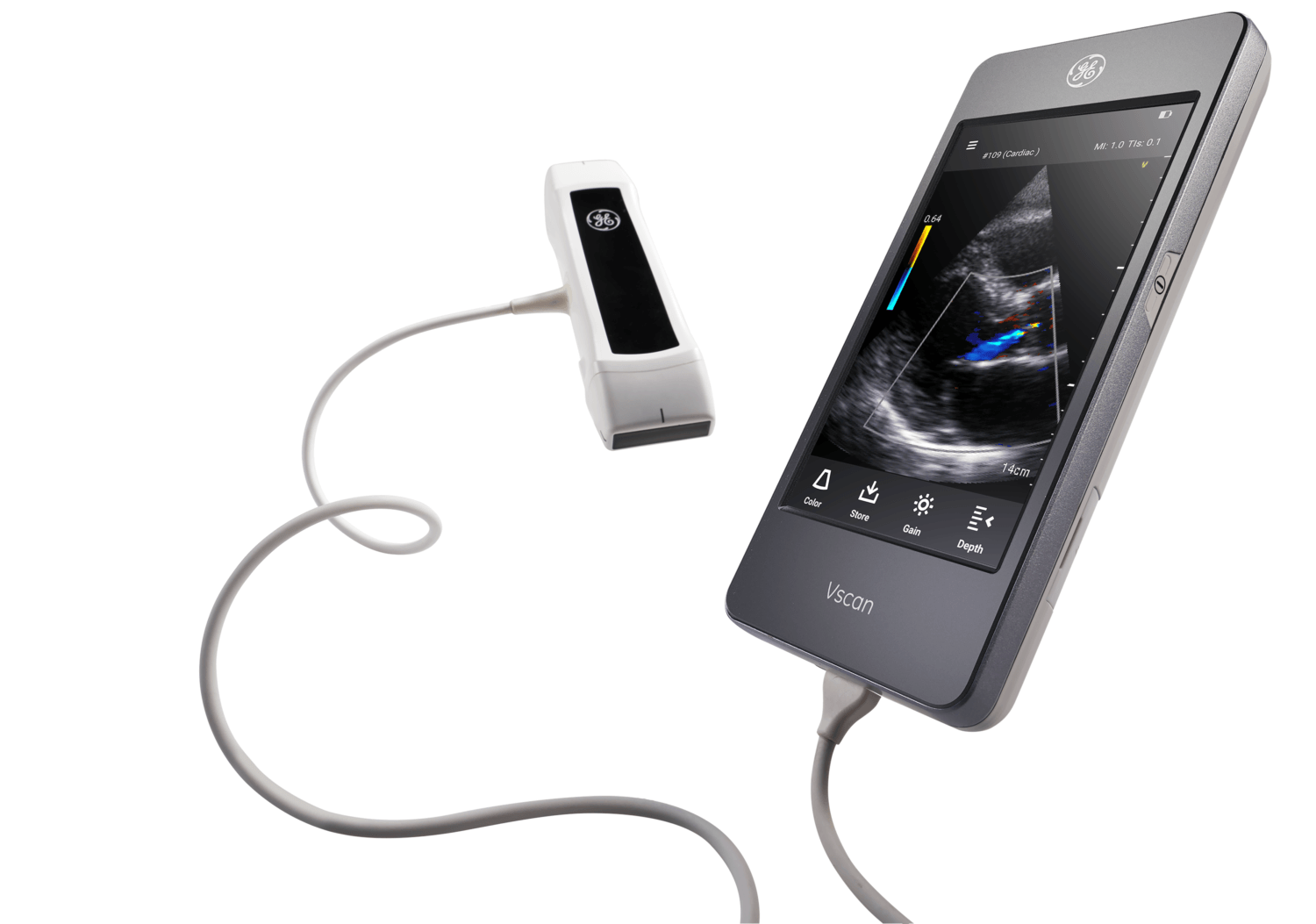
– GE Healthcare’s James Hurley explains how innovations like the handheld ultrasound are inspiring the next digital breed of smarter, smaller, and seamless clinical care tools.
Wearables—once innovations that only lived in inspired minds and science fiction novels are now nearly ubiquitous. You can’t shake a stick, or a hand for that matter, without an adorning Fitbit or Apple Watch attached to it. Yet, what started as a consumer fad is now evolving well beyond it and out disrupt U.S. healthcare.
Perhaps there is a similar catalyst, like the Fitbit, in the clinical care realm: the handheld ultrasound. The concept may feel new, but GE Healthcare pioneered the inspiration for the device in 2009, the same year Fitbit’s first wearable hit the consumer market. Of course, counting steps and calories is not exactly a target for clinicians. The idea of creating access to adaptable and agile devices, however, was GE Healthcare’s muse.

“We wanted to drive access to better quality care at a lower cost and ultimately change the entire way clinicians perform physical exams,” said James Hurley, general manager of handheld ultrasounds at GE Healthcare. “We learned that ultrasound could provide important information during physical exams, which could impact patient triage and improve care. We identified the pocket-sized ultrasound as the next step in miniaturization to enable non-traditional users to adopt the tool, such as primary care doctors, said Hurley.”
The Catalyst Concept
Miniaturization is always challenging, and in the case of the ultrasound, the challenges were undoubtedly there. Taking technology from the already reduced size of a laptop and making it even smaller, while not significantly compromising image quality, is not an easy feat.
“Additionally, we were creating an ultrasound device with a completely different design, look, and feel,” Hurley said.
Despite the pushback and wait to develop the evidence of benefit, GE pushed on; the company released the handheld Vscan Ultrasound in February 2010, hitting the market in the U.S., India, and Canada. Today, the company has thousands of users and a substantial body of published evidence about the value and feasibility of integrating Vscan devices into clinical workflows.
“The ability for a physician to pull a device out of their coat pocket and scan a patient at a moment’s notice can make care faster and more efficient, said Hurley. “It also brings the patient into the overall experience because they can see what is happening in real time. And as they say, a picture is worth a thousand words.”
The adoption of innovative clinical care tools shouldn’t be too surprising given the growth of digital-health devices in the consumer market. According to RockHealth, digital services, and technologies have been on the rise since the full-service venture fund began surveying consumers in 2015.
The Digital Health Consumer Adoption 2018 survey, authored by Sean Day and Megan Zweg, pointed toward a pivotal change occurring in the space. The introduction stated: “Consumers continue to go digital and are now doing so not just out of curiosity or for general fitness and well-being—but with the intention to address concrete health needs. More Americans use digital health to manage diagnoses, connect with providers, and make critical healthcare decisions than ever before.”
The Next Chapter
With consumer demand for digital health devices and services on the rise, it’s nearly imperative that the clinical space follows suit. The result of GE’s Vscan Ultrasound is that it’s enabling more significant information gathering during a physical exam that results in better triage and could also result in fewer follow-ups or unnecessary appointments, therefore bringing down costs. From cardiologists and general practitioners to primary care physicians and emergency clinicians, the handheld device is accelerating treatment at the bedside of patients around the world.
Still, Hurley said GE is currently focusing on improving the impact of the handheld ultrasound in clinical care. The technology is still relatively young, and the company wants to continue to give modality and even more visibility to the ways it can successfully integrate into clinical workflows.
“Education is critical to bring in new users, along with more intuitive devices or even automated devices. Artificial Intelligence is helping to develop support tools, which enable users to get high-quality views, and also interpret these images,” he said.
Naturally, GE’s innovations are not the only new kids on the block. Hurley says that many incredible innovations are emerging in the digital health space, from EKG electrodes that link to smartphones to 27/7 wearables that collect patient health information in real-time. What’s more, there will likely be further integrations with EMR systems to consolidate acquired information immediately and to reduce the number of redundancies. Lastly, cloud-based, telehealth-like technology will undoubtedly continue to mature and encourage remote clinical workflows and consultation.
As for the future of handheld ultrasound devices, Hurley acknowledges that the technology most likely will extend beyond the walls of healthcare organizations—after all, that was the primary intention of the portable device. While Hurley did not provide specifics, he did note areas of need where GE’s devices and others could play a critical part in evolving telehealth.
“Home care is certainly an expanding need. More individuals wish to remain at home as they age, so bringing healthcare to them is an important trend to address. […] There is also a strong need in rural communities to have greater access. Making healthcare technology, such as ultrasound, more portable, enables accessibility in places where it previously was not used. I’m confident that we’ll see handheld ultrasound being used more and more in nursing facilities, in sports medicine, among allied health professionals, and even in pharmacies,” said Hurley.
Is the handheld ultrasound the Fitbit of clinical care? Well, maybe not exactly. However, what it does demonstrate is how mobile tech can create greater ease of use and greater access to information all at the same time. If the consumer wearable market has taught us anything it’s this: Knowledge is power, but easy access to knowledge, well, that’s what is truly transformative.
The road to adopting innovation isn’t always easy, but Hurley certainly seems to think it’s worth taking.
“By adopting this type of technology, health organizations are saving time and money, and more importantly, they’re enhancing clinical outcomes. Those are hard stats to ignore, even if change can be difficult,” Hurley concluded.

